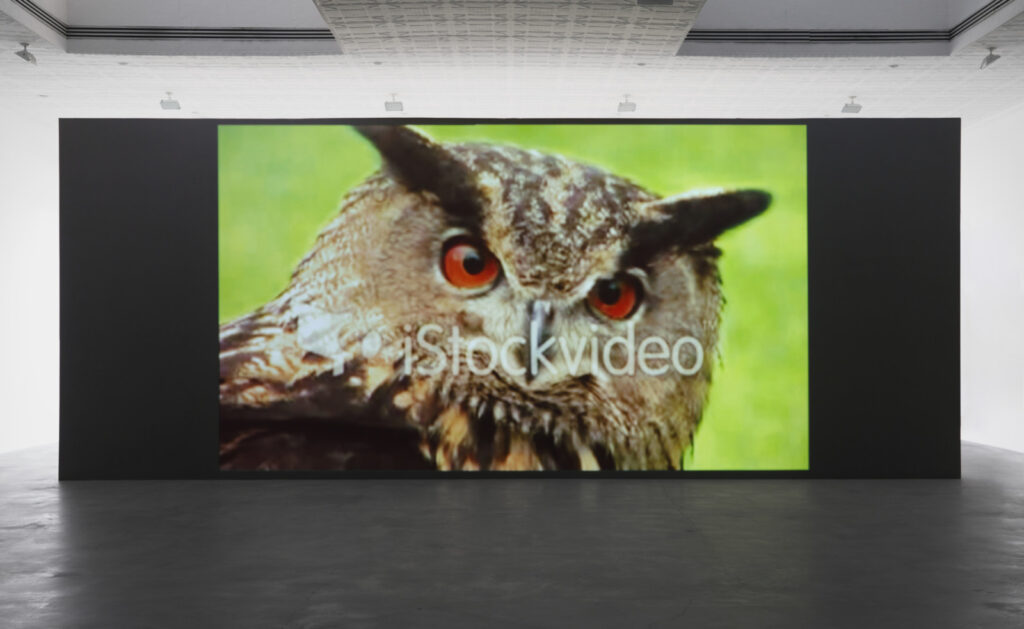
Repeating Sturtevant’s Simulacra, 2013, with some stock footage of Flaco (RIP)
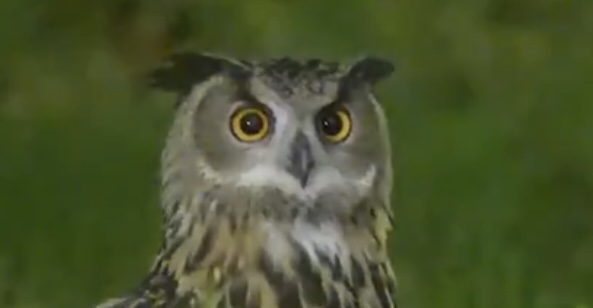
cf. from one of Flaco’s closest observers, @davidlei
previously, related: Sturtevant, Simulacra, 2013
the making of, by greg allen

Repeating Sturtevant’s Simulacra, 2013, with some stock footage of Flaco (RIP)

cf. from one of Flaco’s closest observers, @davidlei
previously, related: Sturtevant, Simulacra, 2013

When I saw a print of this 1958 photo of Rauschenberg in his studio in a group of eleven artist portraits by Dan Budnik coming up for sale in LA, I took a closer look at the boring side of the image, which turns out not to be boring at all.
Continue reading “Monogram Enhance. Track Right. Enhance.”A rancid and myopic review of a new exhibition at Tate Britain of fashion and John Singer Sargent was making the rounds this week. The dismissal of fashion as an unworthy nuisance to the proper appreciation of Sargent’s great painting was so caustic, you didn’t have to see the show to know he was wrong.
And as if to prove the point, Jessica Lynne dropped a two sentence intro to the latest episode of her podcast, Harlem Is Everywhere, produced as a companion to the Met’s new exhibition, The Harlem Renaissance and Transatlantic Modernism, that also perfectly accounts for the Sargent show: “Portraiture has to do with how an artist sees a person. Fashion has to do with how we want others to see us.”
The people in portraits in early 20th century Harlem used fashion to communicate sophistication, respectability, and social credibility to a larger world that regularly ignored, doubted, rejected, or oppressed them. And making portraits was itself a highly symbolic social act, on the part of the artist as well as the subject.
Though they were deeper in the WASP-y heart of the white supremacist class structure, the subjects of Sargent’s paintings, often some combination of American, Jewish, or nouveau riche, could be seen making the same assertions in the face of the same forces.
Listening backward, the first episode of Harlem Is Everywhere sets the Harlem Renaissance in the context of the work of W.E.B. Du Bois [HBD, btw] and Alain Locke, and The New Negro anthology, and the movement’s relationship to nascent Modernism.
Which, the next podcast in the queue last night turned out to be the new season of The Art World: What If…?!, where Charlotte Burns spoke with composer and musical artist Alice Smith. Smith’s transcendent presence is a highlight of Isaac Julien‘s five-channel video installation, Once Again…(Statues Never Die), commissioned by the Barnes Foundation in 2022. Once Again depicts the interactions between Locke and the Foundation’s founder, Albert C. Barnes, using enactments of their correspondence and Locke’s own foundational text from The New Negro anthology, “A Note On African Art.” [The longest Julien excerpt I can quickly find online is from last year’s Sharjah Biennial. It’s not enough.]

Honestly I have no idea how it got lodged in my head, but for at least fifteen years, and probably twenty, I was certain that James Turrell made two pieces at PS1.
One is the famous, iconic, even historic skyspace known as Meeting, which has gone through several iterations—perhaps upgrades, perhaps not—since Turrell first created it in 1980 and opened it in 1986.
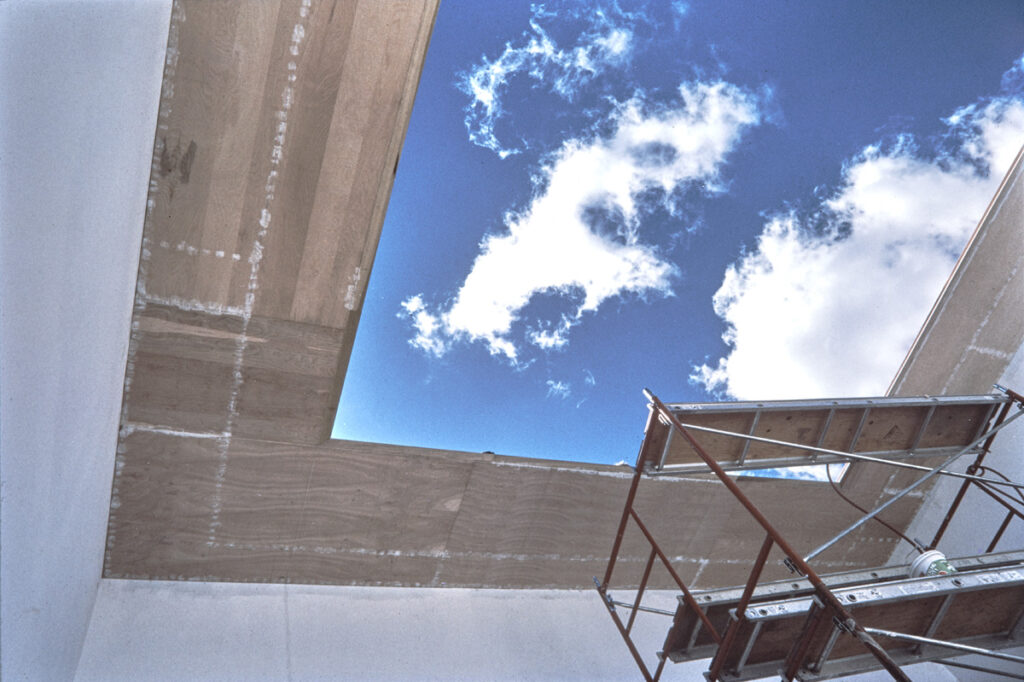
The other was a far rougher, more primitive, but also more visceral, individual experience, just down the hall. A single viewer climbs onto a wooden platform, lays down, and then the platform is slid through an open window just enough for their head to stick out. For a moment, the viewer has a disorienting and somewhat disembodied view of the sky from an extremely unfamiliar vantage point.
This permanent installation began in a gallery, but the space was then taken over for* was in PS1’s administrative offices, which were open to visitors who would take turns having their heads pushed out the window.
Then this piece was gone, and no one spoke of it again, it was the lost Turrell, that I began to wonder if I’d hallucinated it, a Klaus-era fever dream, or janky Turrell erasure? No, I was just wrong.
Observation Deck (Queens) was a 1996 work by Patrick Killoran, first installed in his studio in Williamsburg, and then installed at PS1’s reopening in 1997. It stayed in place until 2006 2010, mostly missing the Phonecam-brian Explosion. One of the few images of it online (above) is at Rhizome’s archive of VVORK. So thank you for that.
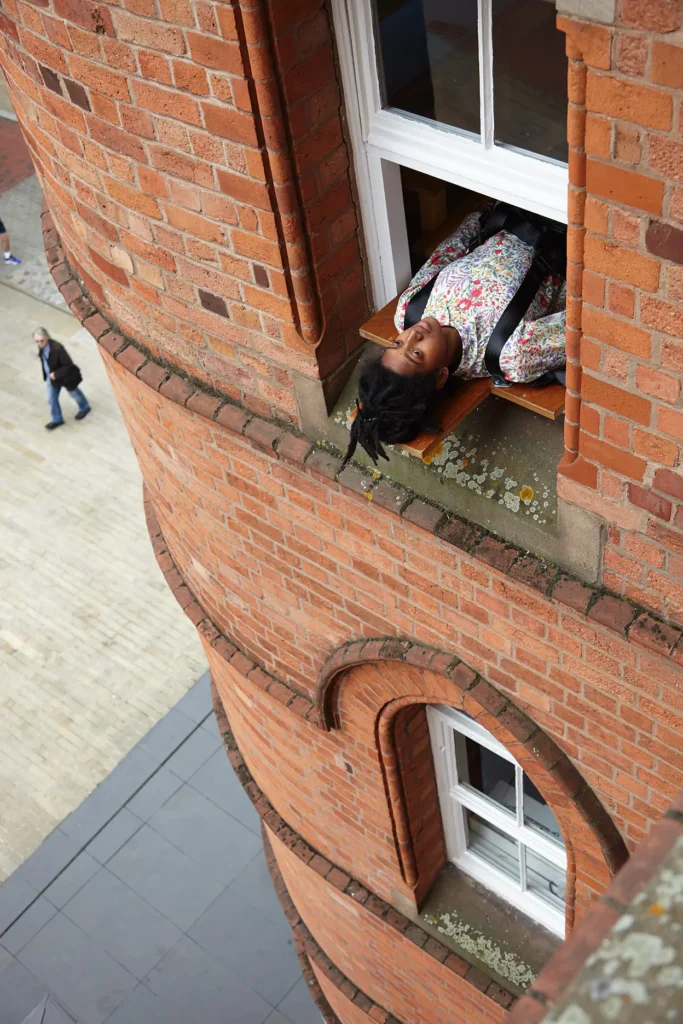
A version of it, Observation Deck (Birmingham), has been installed at IKON since 2016, and has far more photo documentation. They appear to have added a safety harness, which makes sense. Birmingham’s just-announced 100% culture funding cuts, while devastating and myopic, are a small enough source of IKON’s budget that access should not be too affected.
As for how and why I conflated Killoran’s and Turrell’s work, maybe it was some resonance of the sky, the sliding mechanisms, the proximity, and the timing? I can only say it was a compliment for which I am truly sorry, and for which I’m glad to finally be corrected.
* MARCH 2024 UPDATE: And corrected again. Killoran reached out to clarify the work was always in PS1’s office; I concluded wrongly from the VVORK documentation photo that it was in a gallery space at some point.
He also explained the work’s dates related to its studio vs. public installations. Versions would later be installed in Sydney, Nantes, and London.
As for my retconning Observation Deck as a Turrell, Killoran suggested that may have arisen from a 2004 Village Voice article [long since corrected] that called it a Turrell. I’d already experienced Observation Deck several times since then, but memory is a wild thing. Anyway, now we know a little more.

Dianne Feinstein’s house is for sale, and it includes a pool, where her aides probably said she went swimming every day.

Meanwhile, the ghost of Ellsworth Kelly says to expand the court.
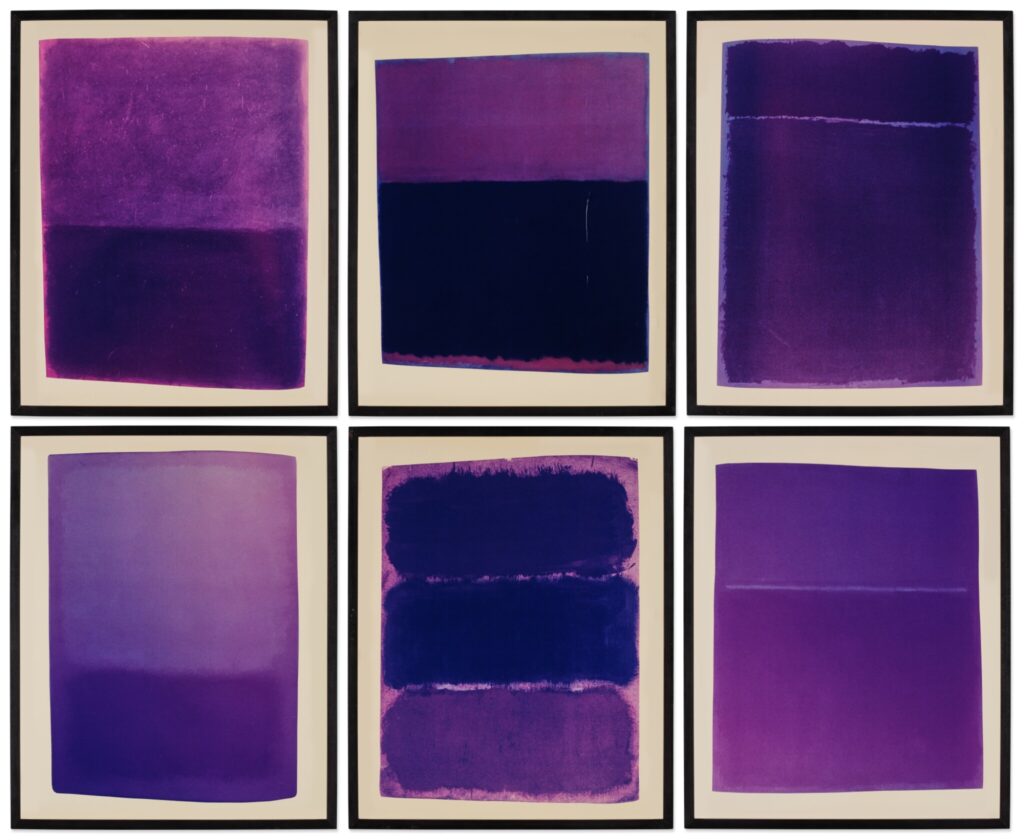
OK, since no one else had done it, I decided to figure out the Mark Rothko catalogue Mike Kelley photographed for his 1985 edition, More Tragic! More Plangent!…More Purple! which he printed in 1996 and published with Patrick Painter Editions.
If he’d actually taken all the photos in 1985, his options for catalogues with a decent number of full-page, full-color reproductions of Rothko’s paintings were very limited.
The first and biggest candidate was Mark Rothko, 1903-1970: A Retrospective, Diane Waldman’s catalogue for the 1978 show at the Guggenheim, which has been republished several times. No. Only one of the six Kelley works—a 1953 painting on canvas— was included. There was another possibility, thinner but timely: a catalogue for a 1983 show at Pace titled, Mark Rothko Paintings 1948-1969. I couldn’t find a copy nearby.
Fortunately, the only Rothko book the curators of the current Rothko Paintings on Paper show left in the National Gallery’s library was a spare copy of the catalogue from the National Gallery’s first show of Rothko Works on Paper, in 1984. That catalogue, assembled by then-Rothko Foundation curator Bonnie Clearwater, with an essay by Dore Ashton, was republished in 2008.
I found all six Rothkos Mike Kelley used in More Tragic! &c., and identified and collaged them with no purple below, to match the Sotheby’s hang above:
Continue reading “More Factcheck! Same Plangent!…Less Purple!”
The Georgia Museum of Art at the University of Georgia in Athens just opened, Richard Prince: Tell Me Everything, an exhibition of joke-related works that seems to focus on new work related to the original joke files of the 20th century comedian Milton Berle. [If you’re within six hours of Athens today, Feb. 21, the exhibition’s curator Shawnya Harris is giving a gallery talk at 2:00. So get going.]

Over his eight decades in show business, Berle had collected, organized, and annotated thousands of jokes on 3×5 inch index cards. Prince acquired four file cabinets of Berle’s jokes from an auction in 2013.
In his second deposition, made in 2018 for the [recently settled] lawsuits over Instagram portraits, Prince talked at length about his use of jokes, and transforming something heard into something seen.
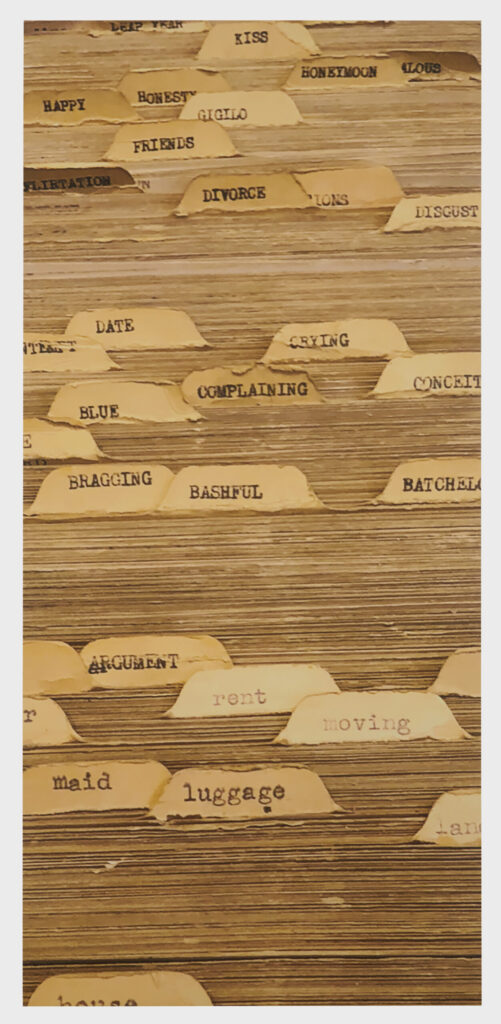
When I first saw these images, I figured that their elongated, portrait-style dimensions reflected a decade of Prince using an iPhone as a studio. But they also simultaneously read as landscapes, with joke mesas extending to a cropped out horizon, a western desert begging for a cowboy. Then I saw the file cabinets, and realized these images also map to their subject, and the experience of living with these physical objects made over decades from words, ideas and language.
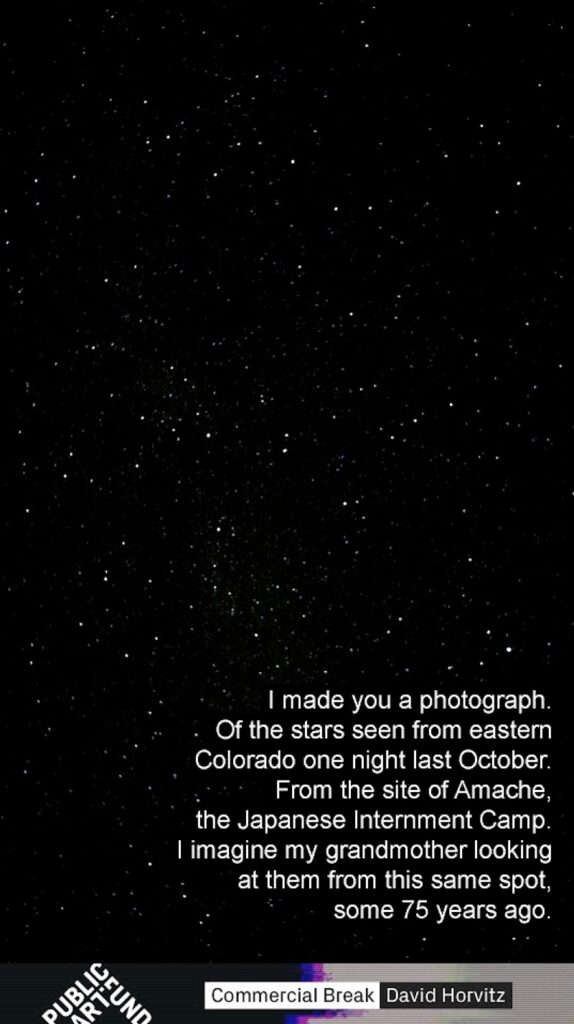
Yesterday, February 19th was the anniversary of FDR’s Executive Order 9066, which ordered the displacement and imprisonment of 120,000 Japanese and Japanese-American citizens in remote detention sites around the western US. Artist David Horvitz marked the date on Instagram with a post about his grandparents, who met while incarcerated in Amache, Colorado.
Horvitz showed his photograph of the night sky as seen from Amache in a 2017 Public Art Fund exhibition on LinkNYC pylons. For Kiyoko (From Amache) depicted the same stars his grandmother might have seen, the same stars under which new groups of people in America were being threatened by the new government with kidnapping, detention, and deportation.
Horvitz’ website includes audio of a brief text about the making of this piece.
The Public Art Fund’s page has an installation photo of the image in Herald Square, and the way it blends right in to the landscape is kind of unsettling rn.
davidhorvitz.com
Commercial Break, Feb-Mar 2017 [publicartfund.org]
[And DC]. I just drove so far I ran out of content, so I relistened to the David Zwirner podcast about Benjamin Binstock’s reattribution of several Johannes Vermeer paintings to his daughter Maria Vermeer. In the interim, I’ve also watched Binstock’s address of Lawrence Weschler’s 2013 symposium at the NY IFA to address the authorship theory. Which, also, it rests in large part on creating a chronology of Vermeer’s extant works, something that traditional Vermeer scholars have generally eschewed in favor of more arguable date ranges.

Here, meanwhile, is a timeline Binstock presented in 2013 of Vermeer’s production, to scale, with seven what he calls widely recognized “misfits” outlined in red.
In case you don’t recognize them immediately, they are, from top to bottom, with their Rijksmuseum dates:
Girl Interrupted at Her Music, c. 1659-61, at the Frick
Young Woman with a Lute, c. 1662-64, at the Met
Mistress and Maid, c. 1665-67, at the Frick
Study of a Young Woman, c. 1664-65, at the Met
Girl with a Flute, c. 1665-66, at the National Gallery (DC)
Girl with the Red Hat, c. 1665-67, at the National Gallery (DC)
Woman Seated at the Virginal, c. 1670-72, Daphne & Thomas Kaplan’s Leiden Collection
It does seem wild that all the Maria Vermeer Theory paintings are in the US. The Kaplans’ Vermeer, long unknown to scholars and not really even seen until the 21st century, was bought by Steve Wynn at Sotheby’s in 2004, and its Vermeer attribution was only firmed up in the last 15 or so years. So very much in play, just as Maria’s name appeared in the discourse—and was ignored or dismissed.
Previously, related: Girl With A Reattribution

I want to find something more to post about these Mike Kelley photos than that he made them in 1985 by jankily rephotographing a Rothko catalogue; he published them in 1996, one of a couple of projects done with Patrick Painter; they were some of the half dozen or so works Elton John bought from Vaknin Schwartz, the once-hot Atlanta gallery down the street from his condo; and they’re one of a thousand other things he’s selling this week at Christie’s.
But it’s not easy.
Continue reading “Mike Kelley & Rothkoian Purple”
Happy belated birthday, Gerhard Richter, who is apparently too busy painting, drawing, and collaging to update his website. The Grauer Spiegel (2021, No. 179, pigment on glass, ed. 100+20AP), included in Richter’s current show at David Zwirner in London is not there. It looks like the pigment is actually on the recto of the glass, a depiction of a mirror, not a mirror itself. But that’s just how it’s photographed. Installed at the Points of Resistance IV: Skills for Peace exhibition at Zionskirche in Berlin in 2022, its mirror nature was on full view.
Continue reading “Grauer Richter Facsimile Object”In May 2023 University of Florida entomologist Akito Kawahara and nearly 90 collaborators published the findings of their massive, eight-year study of butterfly and moth evolution in Nature. greg.org hero Brian Sholis posted a recent article about Kawahara’s research in Smithsonian Magazine. He was inspired by his father, On Kawara:
When Kawahara was 4 years old, his parents noticed that he was scared of insects and would run away from them. To help him overcome this fear, his father started taking him for walks in the parks of suburban Tokyo, looking for insects, talking about insects and carrying a butterfly net. “I still remember the first butterfly I collected,” says Kawahara, his eyes brightening at the memory. “It was near my grandmother’s house. I remember the exact place where the butterfly landed. It was a snout butterfly. I had seen it in books, and now it landed right in front of me. I remember my hands shaking and my dad helping me to catch the butterfly.”
Kawahara still has that specimen in his personal collection in Tokyo, which now numbers between 5,000 and 10,000 and also serves as a remembrance of his father. In his youth, the family divided its time between Tokyo and New York—Kawahara attended schools in both cities—and on weekends, his father would take him on butterfly collecting trips. On Kawara also traveled extensively to create his art and sometimes brought his son along, plus their butterfly equipment. As a boy, Kawahara gathered specimens from Singapore, Hawaii, Alaska, California and all over Japan.

Kawahara would have been 4 in 1983. The exhibition catalogue for Kawara’s fall 1983 exhibition at Galerie Watari in Tokyo includes a facsimile of his painting journal for the period between 1981-83, and three sheets of date painting stickers, to scale [above], including just five made in June, July, and August 1983.
The One Million Years Foundation, notes bookseller Jonathan A. Hill, no longer recognizes the catalogue as part of the artist’s printed oeuvre. But Kawara’s documentation of date painting production on his 100-year calendar does seem to confirm this number. And so now we see that on the other days of the Summer of 1983, the artist was laying the foundations of a major scientific breakthrough by hunting butterflies with his son.
A global phylogeny of butterflies reveals their evolutionary history, ancestral hosts and biogeographic origins [nature]
Where Did Butterflies Come From? This Scientist Is On the Case [smithsonianmag via brian sholis]
Previously, related: On Kawara Date Painting Stickers
On Kawara Db
Today Job: On Working Late

I haven’t even scrolled down to read the article, but this caption alone is already my favorite thing of the week. I hope Barbara Visser does a documentary on Richard Prince’s Instagram portraits next.
A Dutch Artist is delving into the murky [sic obv] attribution of Duchamp’s Fountain [artnet]
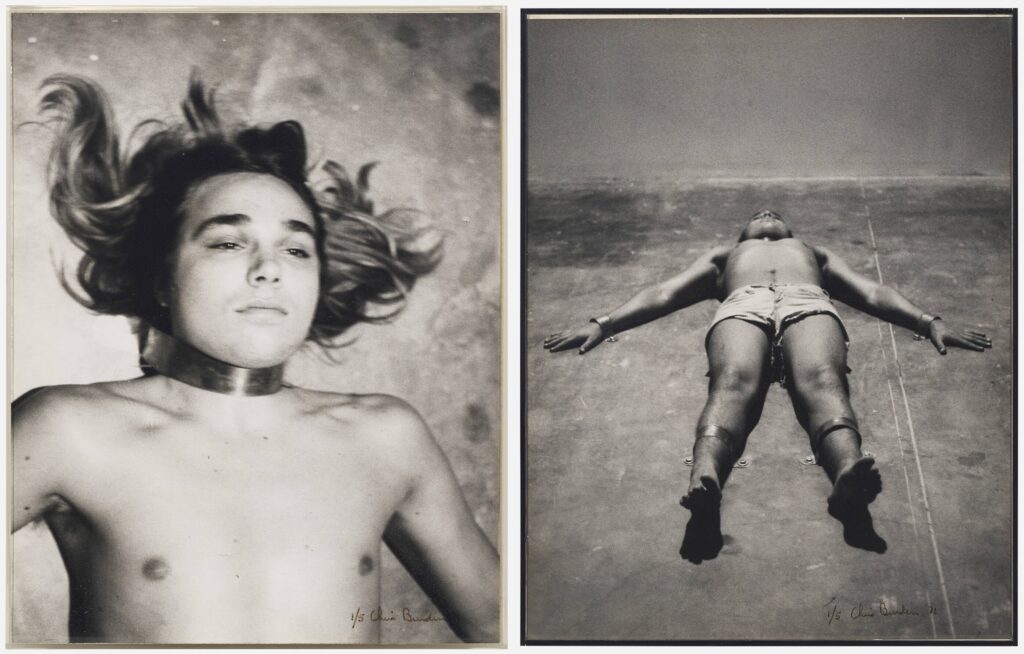
In his peak performance twink era, Chris Burden was not only putting his life on the line for his art, he was selling pictures of him doing it. Or trying to, anyway.
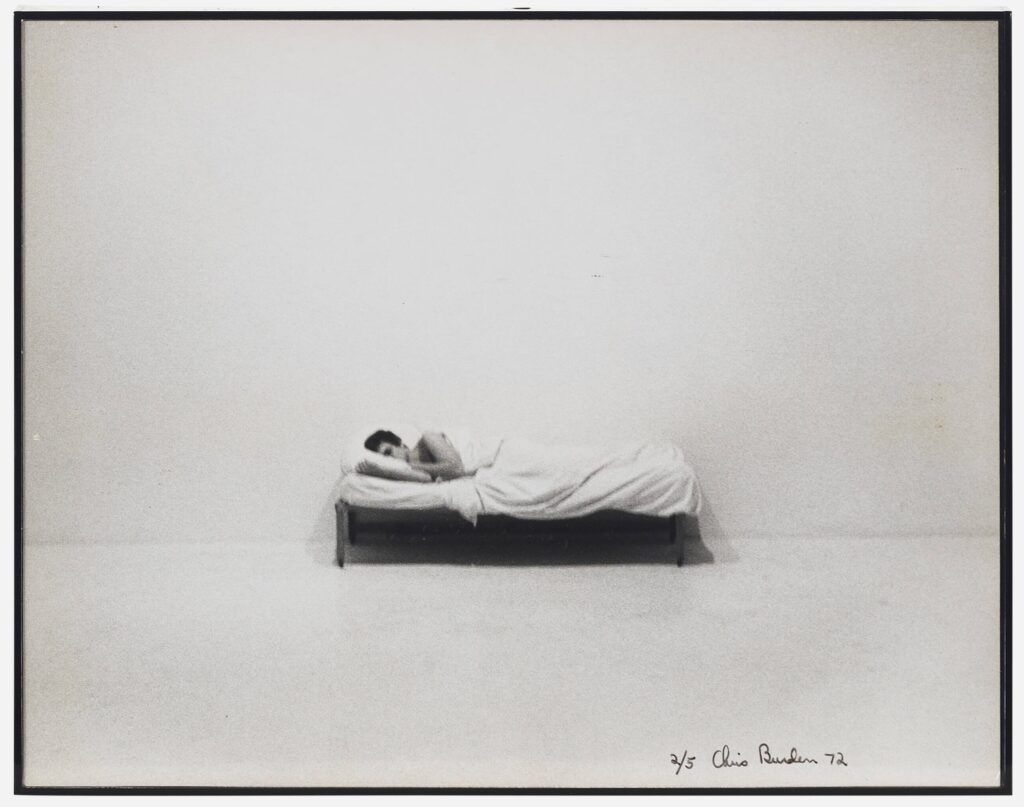
In 1974 Burden released iconic documentary photos of three early performances in an edition of five: Prelude to 220, or 110 (1971), in which he was bolted to the floor next to buckets of water with live electric wires in them; Bed Piece (1972), where he stayed in bed in a gallery for three weeks; and 747 (1973), where he shot at an airplane flying overhead. According to Christie’s in 2000, beside the artist proof they were selling, only one other suite of vintage prints was sold.
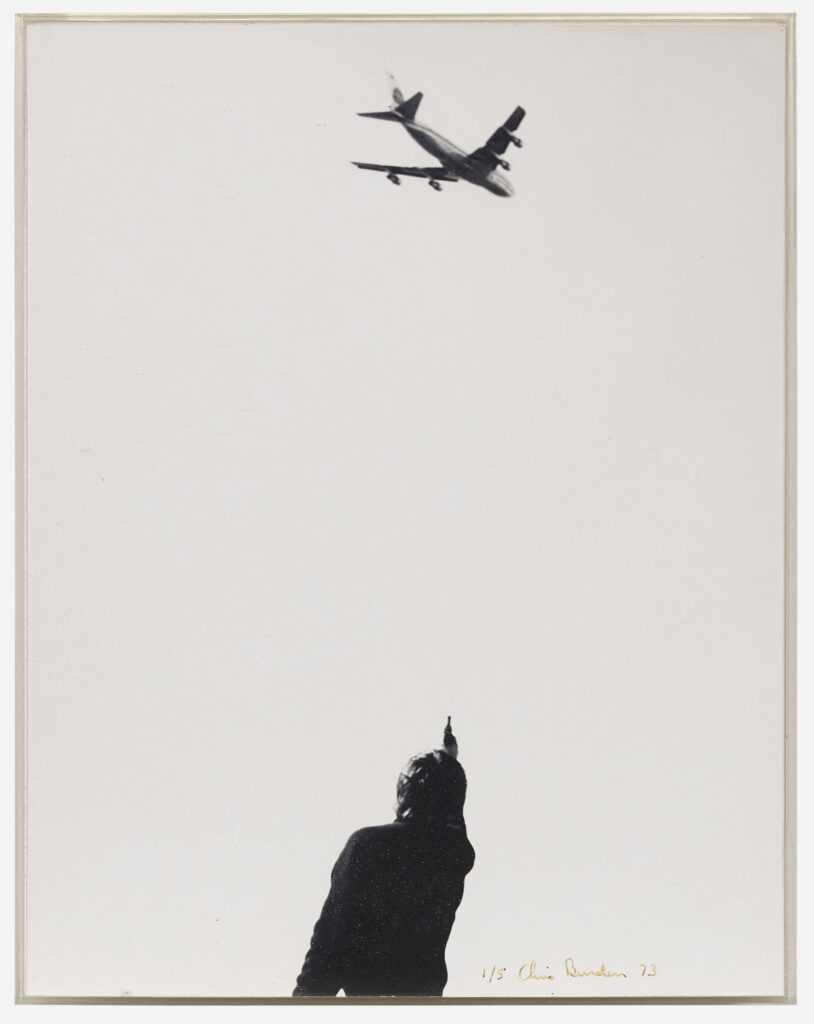
Does that mean except for two sets, the other editions of the prints were sold singly? Or that the rest of the edition wasn’t printed or sold until later? I don’t know.
But it does seem like these four prints at LA Modern were there at the beginning. Three are numbered 1/5, and one (Bed Piece) is 2/5. They were acquired by the same person directly from the artist in 1975. They originally turned up for sale together last summer at suite prices, but didn’t sell. Does that make them a suite or nah? Now they’re being sold separately. It’d be wild if they didn’t stay together, though. Burden collector, you know what you must do.
[day later update: hmm, LA Modern sold both ed. 4/5 ($94k in 2017) and ed. 5/5 ($81k in 2022) which were acquired directly from the artist and, if Christie’s is to be believed, were not vintage, but printed later to complete the edition? So maybe Burden collectors are already doing what they needed to keep the sets together. In 1974 Burden also published Chris Burden 1971-73, an artist book consisting of a binder of 53 8×10 photos and text documenting 23 performance works, in an edition of 50. Oddly, the Met’s copy, acquired in 1993, is catalogued with each of the performances separate.]
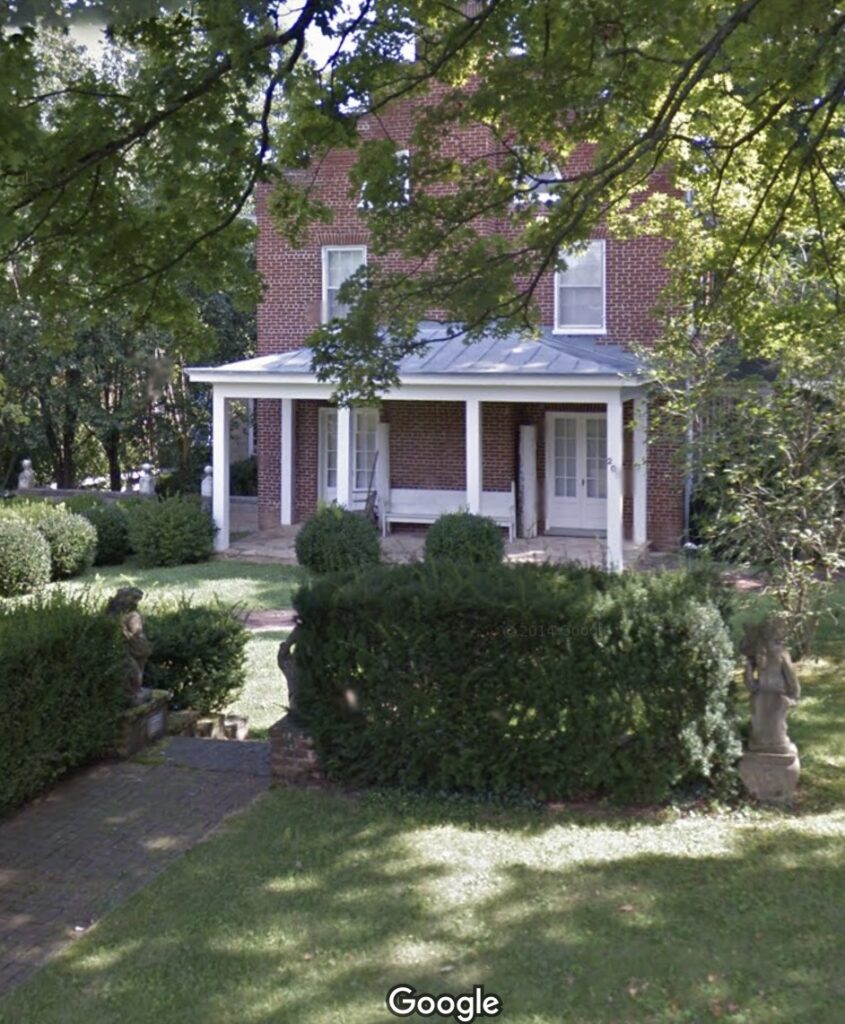
He wasn’t there.